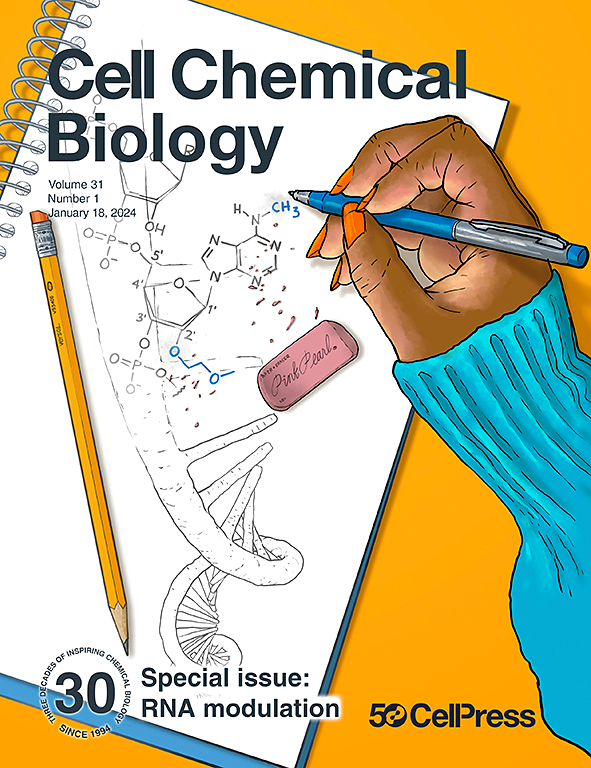应用于USP30去泛素酶底物发现的综合近端泛素组学分析
IF 7.2
1区 生物学
Q1 BIOCHEMISTRY & MOLECULAR BIOLOGY
引用次数: 0
摘要
去泛素酶(DUBs)作为调节疾病关键分子途径的药物靶点的兴趣日益增长,这是由于发现了它们的特定细胞作用。这一事实的一个关键方面是DUB底物的鉴定。虽然基于质谱的蛋白质组学方法可用于研究DUB活性扰动后细胞泛素化的全局变化,但这些数据集通常包括间接和下游泛素化事件。为了对DUB酶的直接底物进行富集,我们开发了一种近端泛素组工作流程,将邻近标记方法(抗坏血酸过氧化物酶-2 [APEX2])与基于K-ε-GG基序的随后泛素化富集相结合。我们应用这项技术来鉴定DUB泛素特异性蛋白酶30 (USP30)抑制后附近泛素化事件的改变。我们的研究结果揭示了先前在TOMM20和FKBP8上与USP30相关的泛素化事件,以及候选底物LETM1,其以USP30依赖的方式去泛素化。本文章由计算机程序翻译,如有差异,请以英文原文为准。


Integrative proximal-ubiquitomics profiling for deubiquitinase substrate discovery applied to USP30
The growing interest in deubiquitinases (DUBs) as drug targets for modulating critical molecular pathways in disease is fueled by the discovery of their specific cellular roles. A crucial aspect of this fact is the identification of DUB substrates. While mass spectrometry-based proteomic methods can be used to study global changes in cellular ubiquitination following DUB activity perturbation, these datasets often include indirect and downstream ubiquitination events. To enrich for the direct substrates of DUB enzymes, we have developed a proximal-ubiquitome workflow that combines proximity labeling methodology (ascorbate peroxidase-2 [APEX2]) with subsequent ubiquitination enrichment based on the K-ε-GG motif. We applied this technology to identify altered ubiquitination events in the vicinity of the DUB ubiquitin-specific protease 30 (USP30) upon its inhibition. Our findings reveal ubiquitination events previously associated with USP30 on TOMM20 and FKBP8, as well as the candidate substrate LETM1, which is deubiquitinated in a USP30-dependent manner.
求助全文
通过发布文献求助,成功后即可免费获取论文全文。
去求助
来源期刊

Cell Chemical Biology
Biochemistry, Genetics and Molecular Biology-Molecular Medicine
CiteScore
14.70
自引率
2.30%
发文量
143
期刊介绍:
Cell Chemical Biology, a Cell Press journal established in 1994 as Chemistry & Biology, focuses on publishing crucial advances in chemical biology research with broad appeal to our diverse community, spanning basic scientists to clinicians. Pioneering investigations at the chemistry-biology interface, the journal fosters collaboration between these disciplines. We encourage submissions providing significant conceptual advancements of broad interest across chemical, biological, clinical, and related fields. Particularly sought are articles utilizing chemical tools to perturb, visualize, and measure biological systems, offering unique insights into molecular mechanisms, disease biology, and therapeutics.
 求助内容:
求助内容: 应助结果提醒方式:
应助结果提醒方式:


